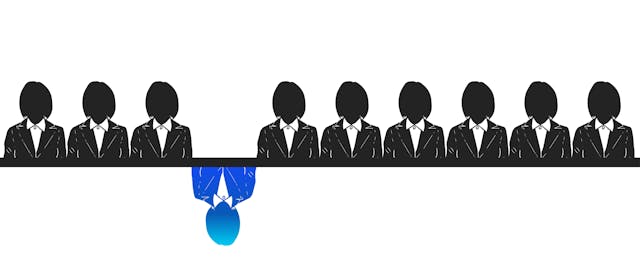One of the most American moments in American literature comes in “Huckleberry Finn,” when Huck fakes his own death to make a clean break from an abusive father, lighting out on his own for a series of adventures. This scene conjures up the national myth of reinvention—that Americans enjoy a certain right to start afresh, becoming who they want to be regardless of their background or whatever baggage they’ve carried in their past.
America has always struggled to meet this ideal, of course. But there’s no doubt that we live up to it less today than we once did. Raj Chetty’s research, for example, has shown that 90 percent of Americans used to earn more than their parents; now only about half do. So, more than ever, a person’s background determines his or her future.
We’re about to embark on a period in American history where career reinvention will be critical, perhaps more so than it’s ever been before. In the next decade, as many as 50 million American workers—a third of the total—will need to change careers, according to McKinsey Global Institute. Automation, in the form of AI (artificial intelligence) and RPA (robotic process automation), is the primary driver. McKinsey observes: “There are few precedents in which societies have successfully retrained such large numbers of people.”
Unfortunately, career reinvention via retraining or upskilling isn’t getting easier, as it must to keep the next generation of Americans at work. In addition to a system that places undue importance on accredited colleges and universities—effectively directing candidates seeking new skills through 60 or 120 credits in college classrooms (often environments where candidates weren’t successful earlier on in their lives)—the problem lies in the process through which most hiring occurs.
Historically, hiring has occurred in two steps:
- An employer makes a decision to hire a qualified candidate
- The candidate starts work
It turns out that the order of these steps matters a lot. When hiring, employers are making a big bet on candidates without knowing how well they will perform in the job. To reduce uncertainty, they look to a complex system of proof points—work experience, degrees, pedigrees, credentials, professional networks—to make hiring decisions. This system significantly disadvantages career changers because accumulating these proof points requires time, money, connections and advance planning. If you didn’t get on the right track a long time ago, you’re probably not in a position to get the job you want now—or at least not close enough to make you a “safe” choice for most employers. The increasingly popular employer practice of “spot market” hiring only makes the situation worse. Those without precisely the right backgrounds need not apply.
The cost of a bad hire comes in the form of churn and lost productivity, and the cost of hiring a replacement can top six figures for many entry-level jobs in desirable sectors. And as the list of job “requirements” for these jobs continues to get longer (primarily due to the addition of technical or digital skills to job descriptions), employers are less likely than ever to hire candidates who haven’t already proven they can do the job. We call this Hiring Friction. It means that being judged “qualified” requires more qualifications than ever, even in a full-employment economy where talent is scarce.
But what happens if we reverse the order of the hiring process?
- The candidate starts work
- An employer makes a decision to hire a qualified candidate
Deferring hiring decisions until after candidates start work can eliminate Hiring Friction, thereby reducing the burdensome requirement of pedigree accumulation. Candidates can be judged more on the basis of their will and skill, and whether they are ready to succeed in a job at the present point in their lives.
Some would argue that candidates with the right backgrounds generally perform best anyway. But most of us who’ve been hiring managers know: it’s often someone with a slightly off-the-mark resume who ends up doing best on the job, because that person wants to succeed most. Flipped hiring opens up opportunity for worker reinvention.
The problem with flipped hiring is that there are all sorts of logistical complexities that make it difficult to implement: Who are trial workers working for? How do they get paid? How are they evaluated? What happens if their work is not up to snuff? Who assumes the risk if they’re not hired?
An entire new industry of intermediaries is emerging with answers to these questions. New entrants as well as existing companies are providing new talent on a try-before-you-buy basis. These models take different forms: staffing businesses with temp-to-perm products; apprenticeship service providers; business services companies with “outsourced apprenticeship” programs. But what unites them is flipped hiring, allowing candidates to prove themselves before employers make a (more informed) hiring decision.
These intermediaries also typically allocate more resources to talent sourcing and training than their employer-clients. Many utilize proprietary assessments to filter applicants more precisely than by degree or pedigree. And most provide candidates with Last-Mile Training: equipping candidates with exactly the skills employers expect so they can be productive from day one.
While several of these flipped hiring intermediaries are based outside the U.S., there’s something beautifully American about what they are doing. Mark Twain would love them. By reducing Hiring Friction and limiting the importance of degrees and pedigrees in hiring, they are helping to realize the American ideal of reinvention. And just in time, because tens of millions of career switchers are about to need them.


